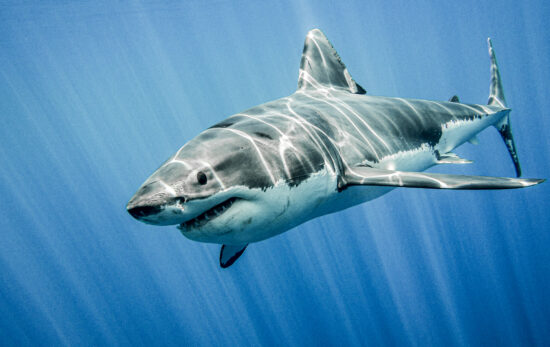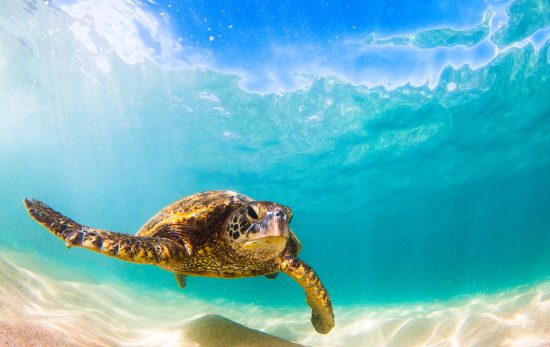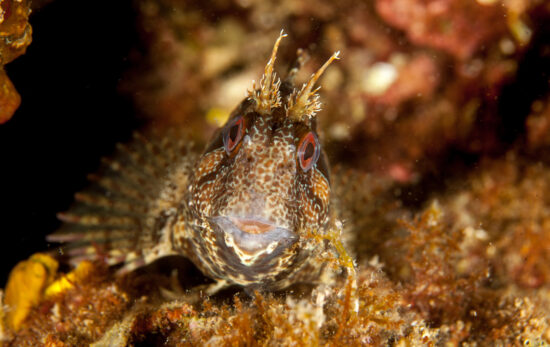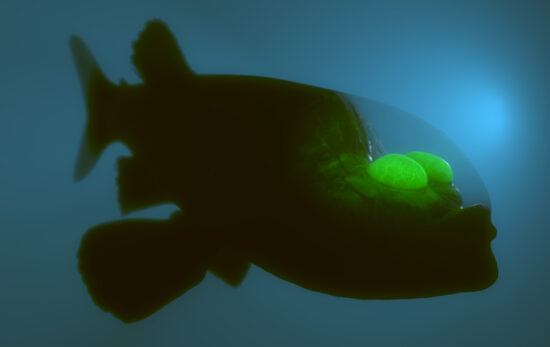Did you know there are nearly 250,000 recorded marine species? It’s no wonder scuba divers have a hard time identifying what they’ve spotted. What’s more, there are countless animals that look alike!
Here are some commonly seen (and confused) underwater animals that look alike — and how you can tell these ocean doppelgängers apart from one another.
Sailfish and Marlins
Part of the billfish family, sailfish and marlins have spear-like rostrums and are fast, ferocious hunters. While both have sail-like dorsal fins, the marlin’s is smaller and slopes into a triangular ‘peak’.
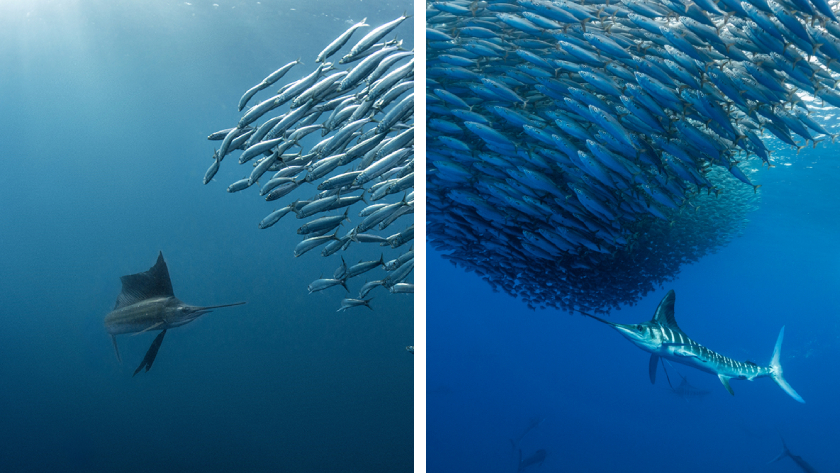
Leafy and Weedy Seadragons
Leafy seadragons are adorned with appendages that mimic their kelpy South Australian habitat. On the other hand, the sleeker weedy seadragons swap decorations for a camouflage of yellows, reds, and vibrant purples.

Hawksbill and Green Sea Turtles
While other turtles (such as leatherbacks) are more distinctive, many divers get muddled between these two. Nevertheless, the best way to identify them is by their beak; hawksbills’ beaks are sharper and hook-like, whereas green turtles’ beaks are more rounded.
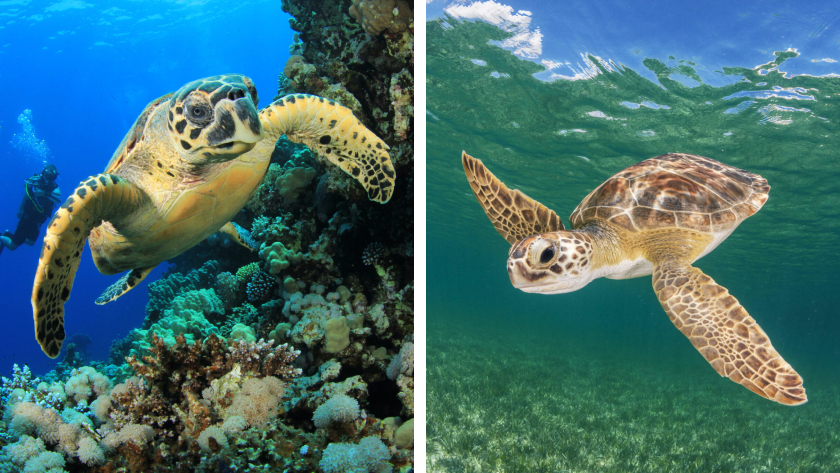
Stonefish and Scorpionfish
Both are indeed masters of camouflage, but look closely. Stonefish have rounder bodies and grumpier mouths, while scorpionfish’s eyes stick out more. They both possess venomous spines, but the stonefish’s are thicker and more lethal.
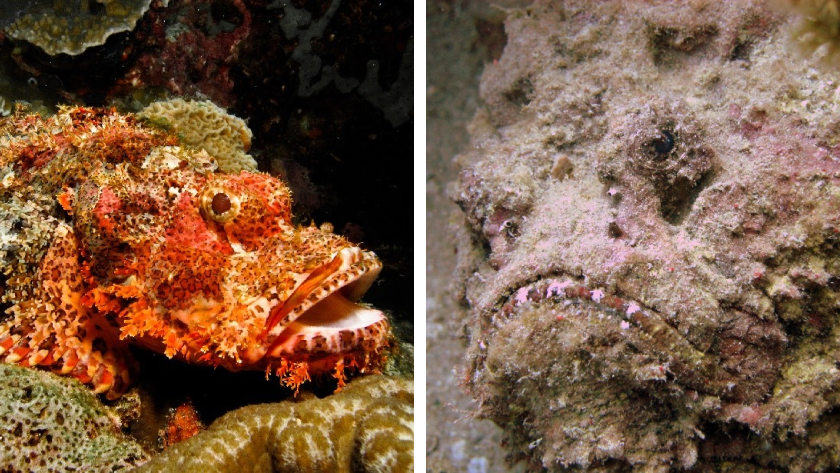
Longfin Bannerfish, Schooling Bannerfish, and Moorish Idols
These almost-identical bannerfish species are members of the butterflyfish family and are often seen in large groups. They also bear an uncanny resemblance to Moorish idols (solitary relatives of surgeonfish). To spot the difference, just compare both tails and snouts!
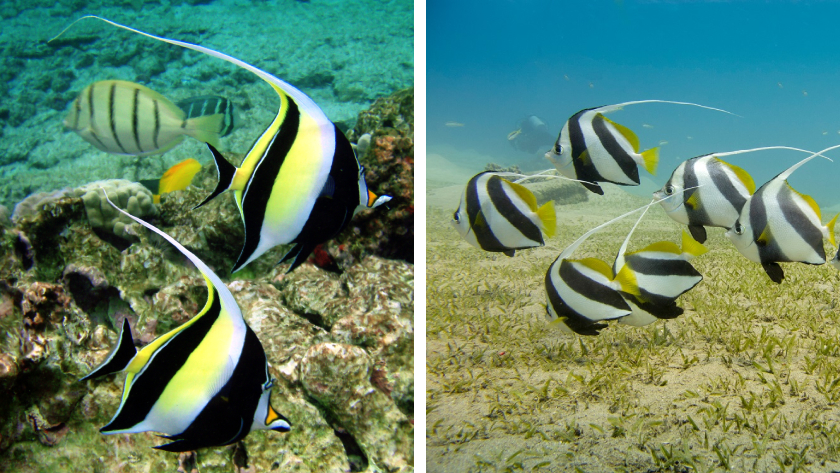
Trumpetfish and Cornetfish
It’s easy to mix up these two elongated fish that look alike, but watch them move: trumpetfish are stiff swimmers, while cornetfish bend and flex more. Cornetfish’s tails are also flourished with a signature ‘filament’.
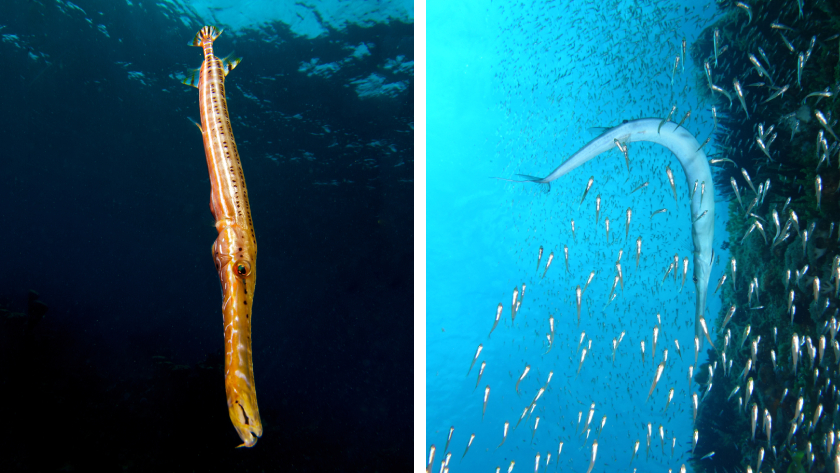
Seals and Sea Lions
Unlike seals, sea lions have external ear flaps and are usually noisier. However, the clearest contrast between these pinnipeds is in movement: sea lions ‘walk’ on their flippers, while seals ‘galumph’ on their bellies.

Prawns and Shrimp
Often referred to interchangeably, these are actually unique underwater animals. You’ll typically find shrimp in colder saltwater, while prawns prefer warmer freshwater — though there are exceptions. Prawns have more claws but can’t curl up their bodies in the same way as shrimp.

Humphead (Napoleon) Wrasse and Bumphead Parrotfish
With bulging foreheads, these giant fish match in appearance and name! Fortunately, telling the difference between them is easy. Bumphead parrotfish have hard, beak-like mouths, while Napoleon wrasse have large, fleshy lips.
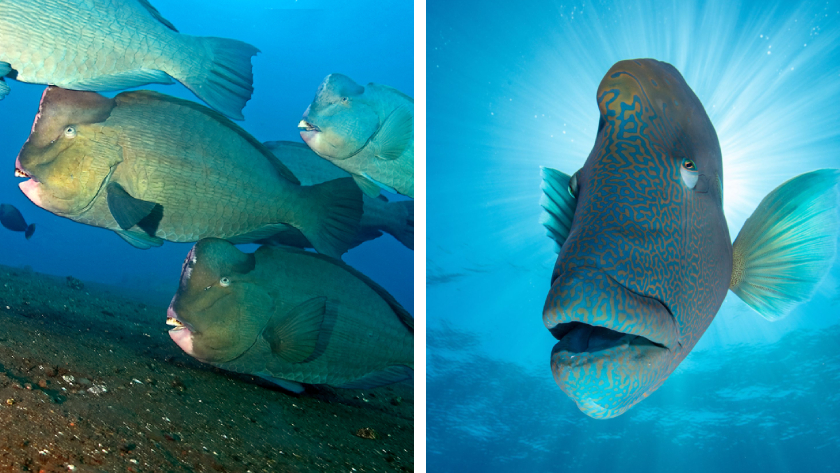
Pufferfish and Porcupinefish
Pufferfish and porcupinefish (aka blowfish) can both inflate themselves and produce deadly tetrodotoxin to defend against predators. However, pufferfish have smooth skin, while porcupinefish use bony spines as extra armor.
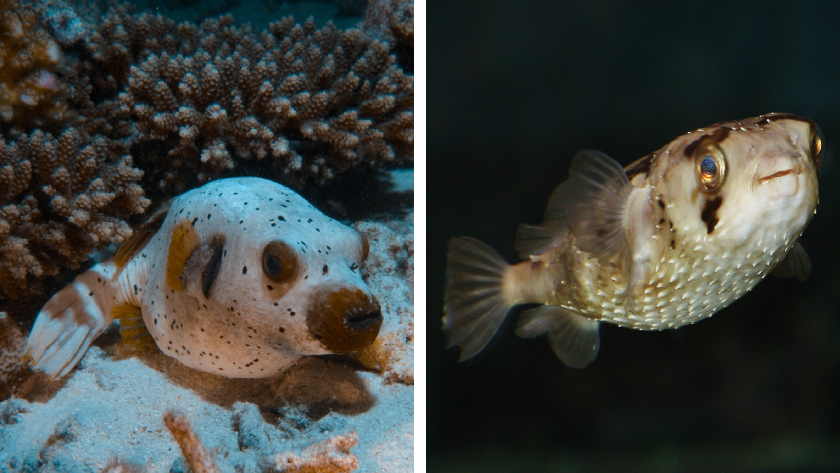
Dolphins and Porpoises
There are many differences between these cetaceans. From the surface, the quickest clue is the dorsal fin; dolphins’ dorsal fins are curved, while porpoises’ dorsal fins are more triangular. If you’re lucky enough to get a closer look, you’ll also notice that porpoises lack the long beak that dolphins have.
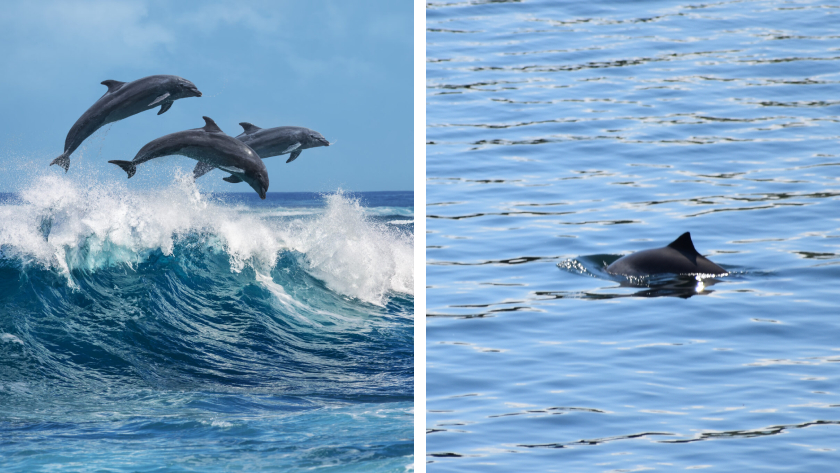
Goldband Fusiliers and Yellowtail Snappers
While these two fishes look similar, goldband fusiliers mainly live around Florida, the Caribbean, and the Gulf of Mexico. On the other hand, yellowtail snappers are native to Indo-Pacific regions. In addition, check out their tails: fusiliers have two distinguishing black spots.
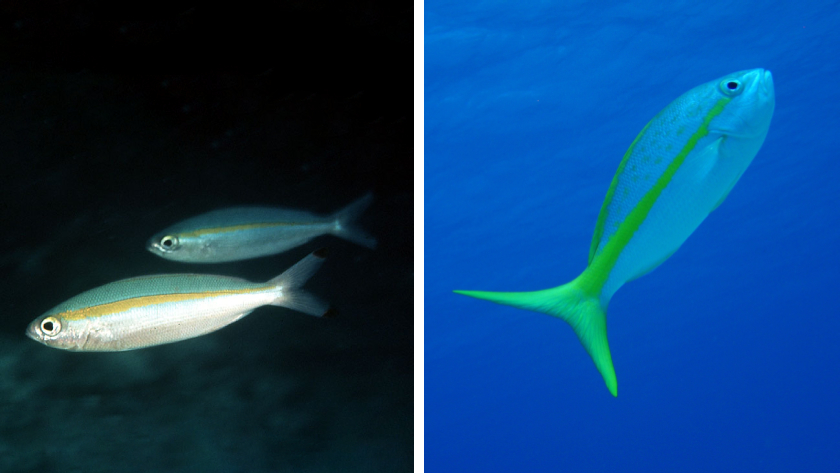
Butterfish (Rock Gunnels) and Greater Pipefish
Residents of UK waters, both species are long, thin, and well-camouflaged among rocks and kelp. However, pipefish have trumpet-like snouts, while butterfish are eel-like with unmistakable black dots along their back.
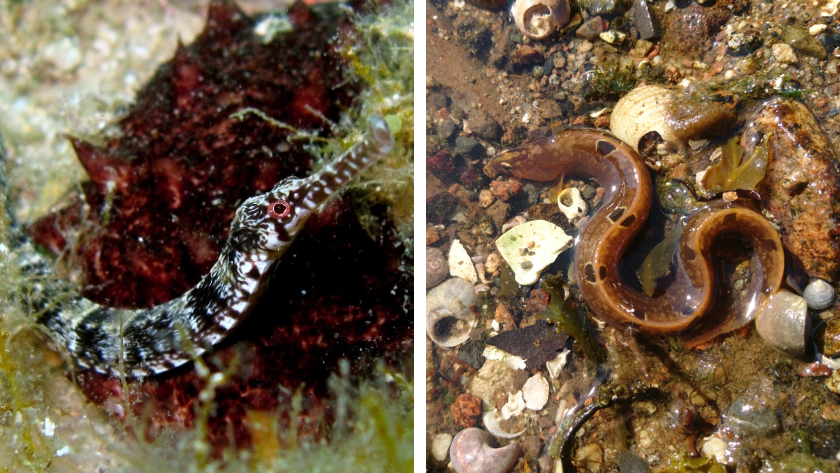
Roberto Pillon / cropped from original), R: Butterfish (Credit: Jack Sewell / cropped from original)
Manatees and Dugongs
Nicknamed ‘sea cows’, these are two frequently confused animals that look alike. However, the easiest way to tell sirenians apart is by their body shape. Dugongs have ‘whale-shaped’ tails and long, broad snouts, while manatees have ‘paddle’ tails and short, rounded snouts.
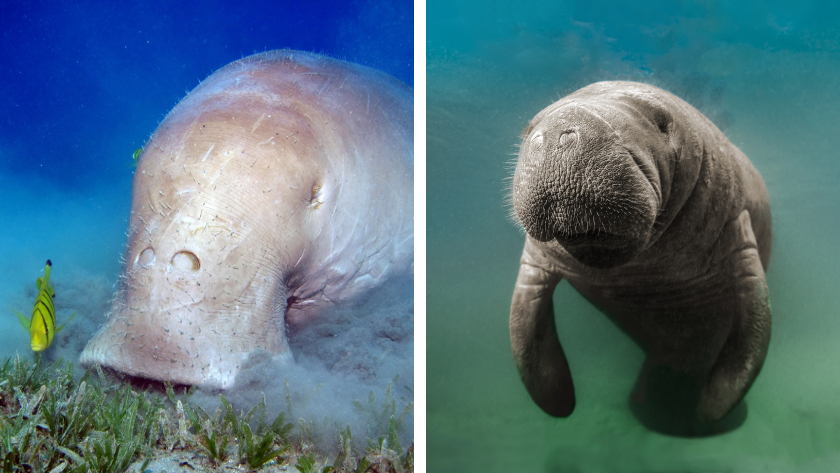
Mimic Octopuses and… Everything!
These intelligently deceptive critters can mimic other animals to aid hunting and defense. In fact, they can impersonate over 15 other species, including lionfish, sea snakes, flatfish, crustaceans, and jellyfish. This certainly makes fish identification trickier!
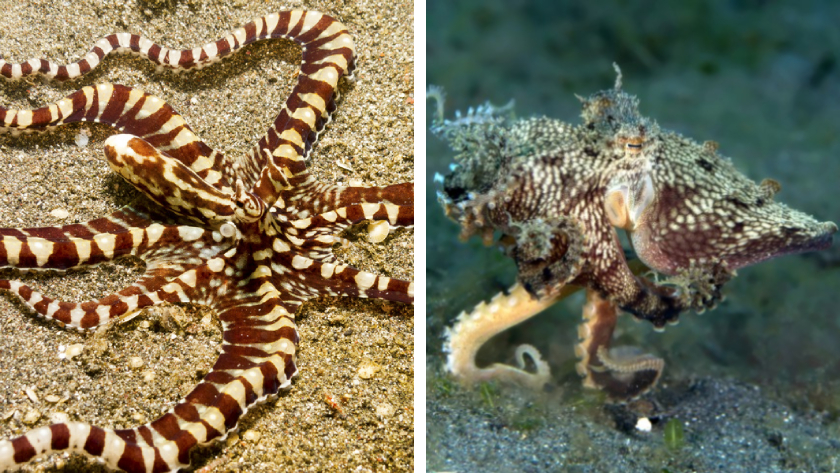
One Fish, Many Names
To complicate fish ID even more, some sea creatures that look alike are, in fact, the same animals with different names. These might come from regional variations, folklore, changes in taxonomy, or nicknames. For example:
- Ocean sunfish = Mola mola
- Sardine = pilchard
- Crawfish = crayfish
- Dogfish = catshark
- Australian barracuda = shortfin seapike
- Longfin tuna = albacore
- Orca = killer whale or blackfish

How to Identify Underwater Animals That Look Alike
There are plenty of ways to identify animals that look alike. In particular, the PADI Fish Identification course will teach you how to recognize and reference the different sea creatures you see on dives. You’ll learn about the characteristics of fish families and species, survey techniques, and tips for protecting marine life.
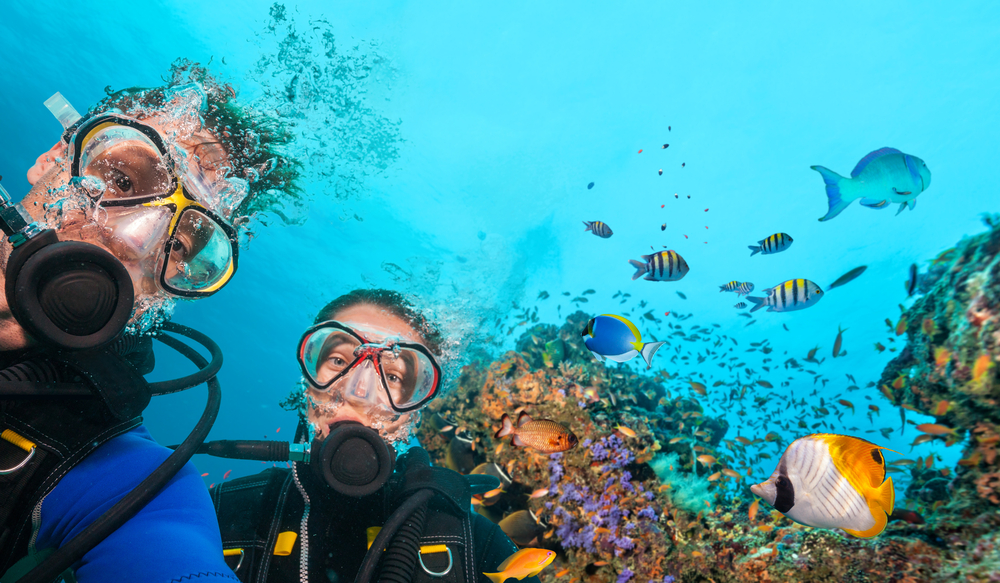
Knowing what creatures you’ve seen (and being able to tell others) will make your dives even more memorable and enjoyable. Start today with PADI eLearning!


